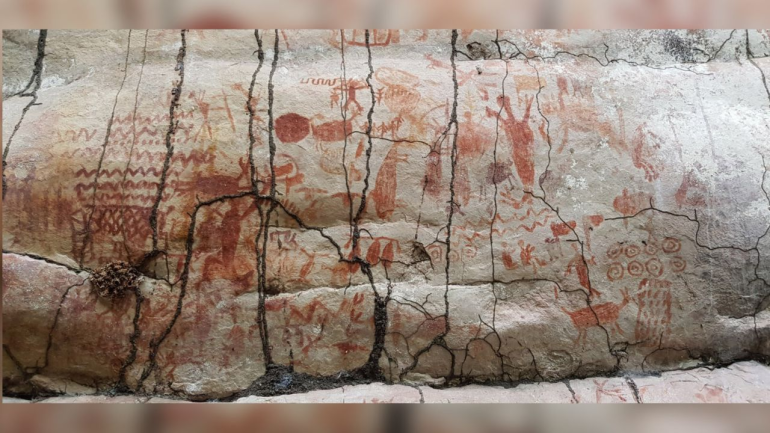In the heart of the Amazon rainforest lies a breathtaking discovery – an immense canvas adorned with drawings dating back to the ice age. Spanning nearly 8 miles, these ancient artworks depict a world teeming with creatures long extinct, from mastodons to giant sloths. Unveiled in the Colombian Amazon, this treasure trove of ochre-painted illustrations offers a fascinating glimpse into the lives of the earliest inhabitants of western Amazonia.
Archaeologist Mark Robinson, from the University of Exeter, collaborated with Colombian scientists to study this remarkable find. They revealed that indigenous people likely began painting these images around 12,600 to 11,800 years ago, as the Amazon underwent a transformation into the tropical forest we know today. During this time, temperatures rose, reshaping the landscape from savannas to lush rainforest.

The artwork is a rich tapestry of handprints, geometric patterns, and an array of animals, ranging from deer and tapirs to camelids and horses. Scenes of hunting and interactions between humans and their environment adorn the rock shelters, providing insights into ancient lifestyles. Unlike previous discoveries in Central Brazil, these paintings offer detailed depictions of ice age creatures, shedding light on their appearance and behavior.
These rock shelters also serve as windows into the past, offering clues about early human occupation in the Amazon. Excavations revealed remnants of a diverse diet, including palm fruits, piranhas, and armadillos. The discovery, made possible by the 2016 peace treaty between the Colombian government and FARC, underscores the importance of preserving cultural heritage in conflict zones.

Jose Iriarte, another researcher from the University of Exeter, emphasized the significance of art in ancient cultures, suggesting it played a vital role in social connection. The findings, published in the journal Quaternary International, coincide with a television documentary titled “Jungle Mystery: Lost Kingdoms of the Amazon,” offering viewers a closer look at this mesmerizing archaeological marvel.
In summary, this discovery unveils a chapter of human history intertwined with the vibrant ecosystem of the Amazon, providing a glimpse into a world long gone yet preserved in vivid ochre strokes for generations to come.










